
This article is a translation from the Italian ecoanarchist
paper “Terra Selvaggia”. >>
Why C.E.A. Grenoble, the largest centre of technological research that has been
producing eco and social disasters for military purposes for 50 years in Rhone-Alps
must be closed down. We have already extensively talked about nanotechnologies and biotechnologies in previous issues of Terra Selvaggia by also publishing writings from America, where such technologies are quite advanced. This context appeared so unfamiliar to many European countries that some of our readers pointed out how certain sceneries were improbable even in the field of the new technological scientific dominion. These considerations come out of an underestimation of the situation: the technological developments we talk about do not arrive out of the blue. If they are compared to the technological progress of the past centuries, these new experiments are very fast and can deeply transform our society. Moreover
they are not carried out in secret underground laboratories protected by barbed wire.
Certainly such laboratories do exist but they are not the only ones. Global dominion
decentralizes its death creations in numerous research structures, be they private or public (universities, national research centres, etc). It is not that a single structure is responsible for the realisation of lethal weapons or sophisticated instruments of control; on the contrary many centres work on such projects each contributing to parts of them. Non-strictly scientific disciplines are not excluded from the scientific devastation as they participate to some particular aspects, secondary but indispensable, of it. Nano and biotechnologies are more and more successful in universities where courses, master, doctorates, etc, are created. The link between industry and research is strengthening through investments,
collaborations, and common projects concerning universities, research centres and
companies…but in order to create what? Why do these technologies proliferate? No
technological development can exist without a tenacious work of persuasion that makes it possible. Fomenting fear is crucial in this context: security reasons, threat of possible ‘terrorist attacks’ with biological weapons, defence of national borders create the right atmosphere of consensus to shameless technologies of death and security systems that suppress freedom. Perhaps the time of the cold war is not so distant and perhaps it has never ended. Is there anything more devastating than
nuclear weapons to be used against neighbouring countries? Prestigious
scientists all over the world are working on that, especially inside the ‘harmless’
public research structures that do no need any barbed wire… The history of C.E.A. and of Minatec shows how the distinction between public research that is supposed to be under the control of the population and military research has no sense. This
distinction is one of the mystifications of power. What is then this ‘public
research’ so acclaimed by sincere democrats? It is based on mere
economic considerations: to provide a defence against private speculators.
They fix their attention on meaningless details and completely ignore the heart
of the question. After all, what can we expect by those who consider the
rainforest, the biggest lung of the earth by now reduced to its minimum terms
thanks to deforestation, an economic resource that is falling apart? Even climate change and its devastating consequences on life are quantified in American dollars.
Nevertheless mechanisms are under way, which will soon change the face of
the planet as we have always seen it. More and more advanced technologies cannot resolve global problems but they can certainly resolve other problems, those that the powerful care for: their profits. It is here that the story of this French research centre, called ‘the European silicon valley’, begins. In this centre, where the unjustifiable is justified, all new weapons are programmed, which will be used by
dominion in order to control the ‘emergencies’ created and developed by the latter. Obviously Minatec is not the only structure engaged in this kind of research but it represents an important point of reference in Europe especially as concerns the gathering of scientific disciplines and the encounter between multinationals and so called public research. Minatec is an important target for the movement that struggles against ecodevastation in France and not only. For us, who have been writing about these questions for a long time (with special regard for what
happens in the United States), this is the confirmation that the latest developments of the technological-scientific dominion are so widespread that they have arrived in European laboratories. That is to say very close to us. Who knows, maybe some representatives of C.E.A.-Grenoble-Minatec are in Lebanon to pick up the fruits of the latest experiments on war fields: charred human bodies. ‘The economic metropolis with high potentials of development are identified by investors during the night thanks to images provided by satellites or directly by aeroplanes. The more
these cities are lit the more they are interesting! When the technological stripe of
the alpine arc, in its centres of Geneva and Grenoble, is completely lit and the
biotechnology centres of Losanne, the CERN physics and IT centres of Geneva, the solarenergy of Chambery and the nanotechnologies of Grenoble form a long
spinal column we will be able to say that we have won’. Jean Therme, C.E.A. technological research director and C.E.A.-Grenobledirector.
2006 coincides with the fiftieth anniversary of the Atomic Energy Committee (C.E.A.-
Grenoble). On June 1 of the same year C.E.A. and the national polytechnic institute
inaugurated Minatec, the biggest European research centre for micro nananotechnologies.
NO RESEARCH IS NEUTRAL
‘Defence is the main protagonist of research as it supports civilian and military researches, which are more and more linked to each other’. M. Alliot-Marie, defence ministry on his visit at Minatec and C.E.A.-Grenoble.
This visit reveals the relations between national defence and the research centre in
Grenoble. As it is engaged in constructing nuclear submarines and aircraft carriers,
C.E.A. is responsible for projecting and handling nuclear reactors and high
performance chemical and biological sensors and specializes in the study of the effects of nuclear radiations on biological tissues. C.E.A. was created in 1945 in order to build the atomic bomb. After the ratification of the Stockholm treaty that banned atomic weapons in 1951, former general administrator of C.E.A. Pierre Guillaumaut, military and secret agent, founded a secret structure inside
C.E.A., called D.A.M. (Direction of Military Application).
As the population generally refused the construction and use of atomic weapons,
C.E.A gave itself a respectable façade, which it managed to keep thanks to ambiguity and disinformation. Politicians and C.E.A. directors, while continuing to develop atomic power for military purposes, publicly accepted that France had chosen not to develop any military option: this contradiction became the rule inside the C.E.A.
Hiring of staff was therefore submitted to a rigorous political control of applicants even in so-called ‘civilian’ sectors, which were actually orientated towards military goals. C.E.A. became a ‘state inside the state’: whatever the government on power was, C.E.A. was secretly engaged in the creation of the atomic bomb.
In this context Pierre Gauillaumaut created in1955 the C.E.N.G., ‘Grenoble Nuclear
Studies Centre’, in order to develop electronic devices that were able to work
inside a highly radioactive environment. This led to the construction of the ‘Ledi
Laboratory’ in 1967, which is today an innovative centre of research in the fields of
electronics, microelectronics and nanotechnology. From the C.E.A.-Ledi other
military structures were born: in 1978 the ‘Infrared Laboratory’ (L.I.R.) and the ‘General Delegation of Armament’, and in 1986 the Sofradir.
In the Nineties Soitec was created for the management of the technology of semiconductors in relation to military and aerospace fields. In 2001 Apibio was
created for the development of biochip, with the aim of defence from biological and
chemical attacks.
Fifty years after the creation of C.E.A.- Grenoble the collaboration between military
and the army led to the creation of Minatec, a project planned and carried out by Jean Therme, director of CEA-Grenoble and military-industrial expert.
The importance of Minatec from a military point of view was pointed out in 2001 by an
article entitled ‘Micro technology: a big investment for the defence’. This article was the final achievement of the congress ‘Science and defence’, organized in
Grenoble by D.G.A.: ‘This initiative has offered the occasion to expose to 200
congress participants the priorities of defence needs through a series of
discussions pivoting on three main themes: micro technologies for electronics and the
treatment of signals, integrated captors for information control and finally ‘intelligent’ or nano-structured materials.
Why has Grenoble been chosen? Because it has a worldwide influence thanks to its many laboratories, research centres and universities thatform an impregnable fortress of innovation to which the General Direction of Armaments [D.G.A.]
regularly refers to’.
In 2001 CEA and D.G.A signed up a declaration of intensive cooperation in
the field of electronics with the aim of ‘satisfying the needs of defence for
control, the access to the most advanced civilian technologies and the acquisition of more specialised technologies’.
The D.G.A. have access to the observatory of micro and nanotechnologies and of the ‘Lab Idea’, a ‘structure that monitors theapplication of technology on control
and the calculation of threats.
Minatec is also at disposal of army industries so that they can have access to the most advanced micro technologies’.
The army is linked to Minatec, takes part to the choice of subjects of thesis,
the observation groups on C.E.A.-Leti programs and the financing of some of
the research projects. D.G.A. and C.E.A. cooperate in researches and
objectives of technological innovations.
As nuclear technology in the past, nanotechnologies have now a strategic role for the army as testified by the enthusiasm of the D.G.A.: ‘Nanotechnologies offer us the
possibilities of better performances both in the nuclear field and in that of
the energy of explosives. Their applications are particularly important for missiles and special lancers’.
And as happened for nuclear energy, the mystifications of technologicalscientific
power boasted about good peaceful ‘civilian’ uses of nanotechnology.
A study commissioned in 2004 by C.E.A. highlights other sectors of interest of nanotechnology (such as infantry) and points out the importance of various C.E.A. ventures such as Apibio, Sofradin, Tronic’s, Poxitech, etc.
Biotechnologies are equally important for the army especially as concerns the
realisation of ‘ethnic’ weapons and weapons of mass destruction, which are
not so expansive as the chemical ones. C.E.A also plays an important role in this
sector with its two laboratories, the P4 Biomerieux in Lyon and the military
laboratory CRSSA in La Tronche, which study system of defence against attacks carried
out with weapons of mass destruction. ‘There is nothing in the biological sector that
cannot be transferred on a military level’ (an expert of C.E.A.)
THE INDUSTRY OF RESEARCH
The research carried out in Grenoble does not only concern the army but it also represents a big incentive for the industry. As concerns the
link between industry and research, in fact, C.E.A.-Grenoble is the centre that has the mostadvanced relations with industrialenvironments.
From the C.E.A. website: ‘ From batteries to fuel and nano-machines, from various materials and biochips, C.E.A. is at the avant-garde of technological research and takes an active part to the transfer of this knowledge to industry’. C.E.A. has put into action a number of mechanisms in support of the creation of companies. ‘Biopolis’ is a 6-million euros project financed by local communities and by C.E.A. in order to encourage the creation of biotechnology companies. Twenty-six
companies have been created thanks to technologies developed in Grenoble since
1975. The most important one is C.E.A.-Leti, which has deposited about 1,200 patents
whereas Sohadir and Soitech are the most outstanding companies in Grenoble.
Furthermore E.F.C.I.S., born from C.E.A.-Leti, was bought by Thompson, which in turn hasjoined Italian SGS giving birth to ST Microelectronics. The latter is the third biggest producer of semiconductors in the world and is engaged in nanotechnology research. All these companies are in the running for bio and nanotechnology, given that the world market of nanobiotechnology has been estimated at 24 billion euros in 2005. Therefore C.E.A. does not only create companies but it also makes industrial agreements with already existing enterprises. Minatec is the most known case
but it is not the only one. We can mention Nanotec 300, an investment of 30-million
euros in collaboration with ST Microelectronics, Philips and Motorola; Nanobio, a 46-million euros projects in collaboration with Nano2Life, an European venture that aims at transferring nanotechnologies to health treatments. Convergent biotech, nanotech and IT technologies are a true innovation to investors, as they promote progress in all sectors and contribute to nourishing the economic global
game so beloved to multinationals. The race to progress passes through the increment of consume and therefore it creates new ‘needs’.
In this context C.E.A. clearly shows how scientific research is strictly linked to industrial society and how research and so called progress represent a major factor of competitiveness. Here are some of the innovations elaborated inside the C.E.A.
laboratories: silicon plaques for Play Station 3, X-Box, high definition TVs, watches without batteries, home cinema, portable computers, rotation screens, intelligent styles, high memory rigid disks, infrared sight for support in driving
cars, miniature instruments for medical analysis, food control and biological analysis of water…
The active participation of public research in the race to high tech stirs the enthusiasm of local bodies, following the equation served in its many versions: research = innovation = competitiveness = progress = employment.
‘The development of economic activities emerges from innovation and creates jobs for
all the citizens. Let’s recognize that it is a true gold mine’. The man who said that is Michel Destot, deputy mayor of Grenoble since 1995.
It must be said that this senior engineer of C.E.A. has a great experience as concerns progress, innovation and gold mines…
In this society the blackmail of unemployment justifies the unjustifiable and conceals some essential questions: what kind of employment?
In order to produce what? At what conditions?
What are the social and ecological consequences?
Who will benefit from all that?
AN OUTPOST OF TOTALITARIAN CONTROL
As technologies reflect the projects of society it is important to be aware of them. The Blue Book published in 2004 for the French government by GIXEL, a lobby gathering about fifty electronics companies, gives a clear idea of such projects. Here is an extract from the chapter ‘Acceptance from the population’:
‘Security is often considered as an attack to individual freedom in our democratic societies.
It is therefore necessary that the population accept the technologies that we use, including biometrics, video surveillance and all kinds of control. Public bodies and industrialists need to study methods to make biometrics accepted. These methods must take into account the benefits for the individuals and point out alluring functions such as: -Education in nurseries: pupils will employ these technologies in order to enter schools and parents will rely on them to look for their children.
-Introduction of these technologies in consumables, leisure activities and games:
mobile phones, cars, and domestic videogames.
-Development of ‘cordless’ services in banks, supermarkets, transport, internet access, etc.
As for the technologies of surveillance and control it will be necessary to rely on
persuasion and on regulations by demonstrating how these technologies can
benefit the population and by minimising the annoyance they can cause’.
Idea’s Lab, a ‘laboratory of ideas’ created in 2002 with the collaboration of ST
Microelectronics, France Telecom and Hewlett Packard, can efficiently serve these purposes.
Various kinds of ‘creative’ people (designers, artists, etc), experts in human sciences(sociologists, anthropologists, etc), experts in logistics, microelectronics, microsystems and industrial operators work together in this
laboratory. What is their goal? To make possible the acceptance of futuristic objects
and services that will revolutionise our daily life just as mobile phones have already done. A few examples: electronic trade, communicating clothes, surfing in the
3-D world, biometrics devices, radio frequency labels…
We already know how propaganda can induce to consume products.
Idea’s Lab illustrates the growing intervention of human sciences so that the population get used to the new instruments of surveillance even before products are created. Moreover convergent technologies (biotech, nanotech, IT) make new instruments of social control possible, instruments that power had never attained in human history: ‘intelligent ‘video surveillance,biometrics, electronic micro labels,
nano cameras…
Powerful financial and political interests converge towards these technologies.
They represent the promise of amazing innovation to the State in terms of social control; and to the industry they represent the prospect of extraordinary prospect of profits whereas to research they represent a fruitful source of financing. During his visit at C.E.A.- Grenoble the ministry of defence stated: ‘Thanks to Minatec and
Minologic the defence can rely on civilian research. ST Microelectronics,
Radicell and Soitec can offer important potentials to the equipment of our forces’.
The main sector of interest is ‘Radio Frequency IdentificationDevices’ (R.F.I.D.), a system that allows chips to communicate at distance the information they contain. Substituted bythe bar code in the big distribution, the R.F.I.D. is the main concern of Minalogic. ‘Making many objects of the daily life intelligent and communicative’
is its goal. C.E.A.-Leti, which is the pilotof this project, already works on
‘techniques of impression in liquidphase of the electronics circuits ofR.F.I.D. chips’.
Another important sector is the ‘intelligent’ video surveillance: it consists in creatingmore and more miniaturized cameras that are able to recognize faces and behaviours andto broadcast live their images on a transportweb by making the identification of ‘abnormalsituation’ automatic. In other words technology decides the final diagnosisfollowing a previous classification ofbehaviours into ‘normal’ and ‘abnormal’.
This is also connected to a government billon ‘prevention of delinquency’ inspired by astudy of I.S.E.R.M. on recognizing ‘behaviourproblems’ in young children. As concernsautomatic behavioural identification C.E.A.publishes on its website: ‘Starting from theobservation of faces, the laboratory aims at identifying emotions (joy, sadness, fear, etc)’.
ATmel, the sector in Grenoble thatspecialises in biometrics and micro cameras
is directed by Jean Vaylet, a senior of C.E.ALeti.R.F.I.D. are already in use in public transport tickets and highways in Grenobles. Jewish people living in the French occupied area had to hold the mention ‘Jews’ on their identity card starting from October 1940.
And when in 1942 the yellow star became compulsory to be worn most Jews accepted
the rule without worrying too much; after all they had nothing to hide and sewed
voluntarily the yellow star on their clothes. Then, out of the blue, their mere existence was considered a crime. Do you think that mentioning the Vichy republic is not appropriate? Well, we think it is: it reminds us how we are in the hands of the State and how intelligent video surveillance, RF.I.D. and biometrics can strengthen its efficiency. If the Vichy authority had had these instruments at their disposal in 1940 how many Jews whoescaped persecution would have been saved? Could the partisans have fabricatedfalse documents if biometric passports had been in use then? Similarly, biometrics andvideo surveillance are leading to totalitarian
society.
When the government introduces police records containing biometric data for every
person who ‘has nothing to hide’ and video cameras allow the identification of every
single person, what will be the possibilities ofresistance?
Once these technologies are generalized we all will get used to permanent control and
surveillance and that will be normality to thenew generations.
Consequently the dangers of transgressionof existing rules will be interiorised.
Finally the new technologies of control must be considered along with the project of thesociety that produces them: who benefit from them and why are they developed?
FROM NUCLEAR POWER TO NANOTECH:
THE CONTINUOUS PROGRESS OF ECODEVASTATION
‘Radioactive water is regularly thrown in small quantities into the Isere river. According to Jean Therme these quantities are so small that they dilute themselves in the river’ (fromthe ‘Dauphine Libere’, 30/01/03).
On July 11 2002 C.E.A. announces the stop of its Siloette reactor ‘after two years of
regular and efficient service’. Le Monde writes: ‘C.E.A. Grenoble puts an end to its
nuclear power following the stop of the Siloette reactor’. This stop, which follows
those of the Melusine reactor in 1989 and of the Siloe reactor in 1997, is part of a well thought strategy. Nuclear power, which once was the jewel of the Grenoble research, is now substituted by micro and nano technologies. ‘Our sites will be transformed’ Jean Therme promises. And C.E.A. nuclear technicians get a chance to boast about the beneficial effects of nuclear power: ‘This proves that nuclear structures can function close to urban areas for forty years and then can be dismantled without any bad impact on the environment’.
In September 1976 Louis Neel intervened atthe general assembly of Isere to support theconstruction of Super-Phenix in Malville by pointing out that classic plants (fuel and coal) could cause real deaths whereas ‘the deaths in plutonium plants are only potential deaths’. Two years later the mayor of Dubedout proposed the Thermos project, a ‘domestic nuclear plant’ to provide heating in Grenoble.
Two decades later deputy-major Destot explained to the national assembly that ‘in a
country like France, which lacks of its own energetic resources, nuclear power is an
indispensable source of energy’. A year later he attacked those who opposed
biotechnology in order to justify the latter: ‘Nuclear had to be stopped because it could be used for military purposes’.
By now C.E.A. is no longer a nuclear site as it is engaged in the development of bio and nano technologies. Their operators declare:
‘Minatec will be realised according to an ecofriendly approach by also taking into account the production of renewable energy’. It is well known, however, that
the electrical industry is the most polluting ever as confirmed by
the state of soil, air and water in the area where the CalifornianSilicon Valley is
situated.
In spite of the fact that they boast about durable progress ST Microelectronics also
confirms the devastating effects of the link between industry and research. In fact, they are responsible for stockpiling dangerous materials, spreading poisonous gases and causing water pollution. And what is it all about for?
Just for producing gadgets that will end up in the more and more increasing mountains of electronic waste. At the same time so called durable progress opens the door to new markets: C.E.A.- Leti is working on a system ‘able to observe live the evolution of tumours or the progresses of a cure’; Apibio is working on the creation of chips able to detect cancers, O.G.Ms and chemical contamination; the Sinapis laboratory is bringing to perfection a ‘micro capturer that controls in real time the
management of waste’. What a formidable market is that of ecodevastation and industrial risks!
Certainly trying to fight against the sources of pollution is not so profitable
as fabricating palliatives and remedies while pollution goes on.
After nuclear power and O.G.M, the same logic of death characterising this
society dominated by power and profit is manifesting itself through the race to
nanotechnology.
(extract from 325 Anarchist Magazine – January 2009)
This article is a translation from the Italian ecoanarchist
paper “Terra Selvaggia”.



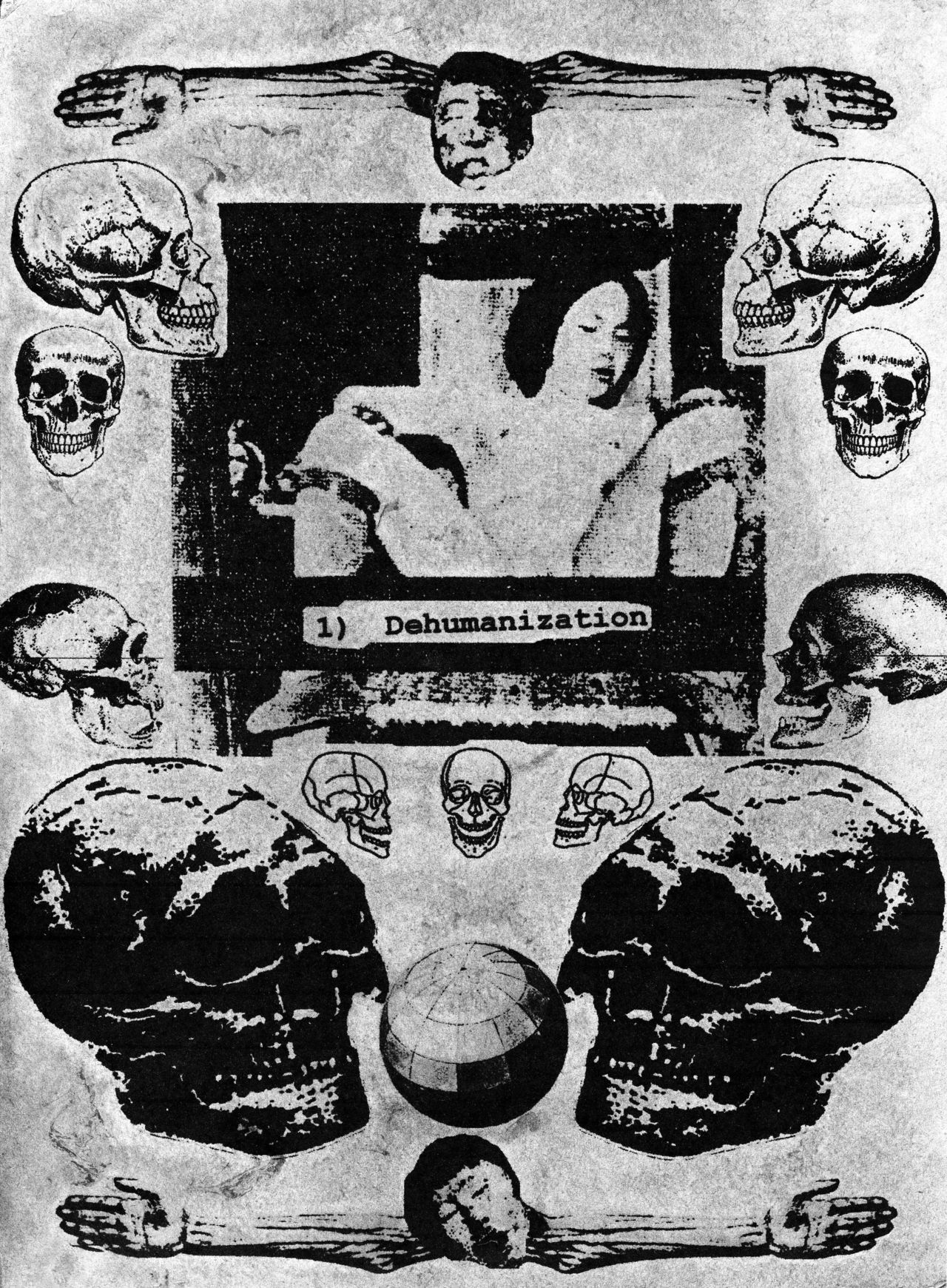



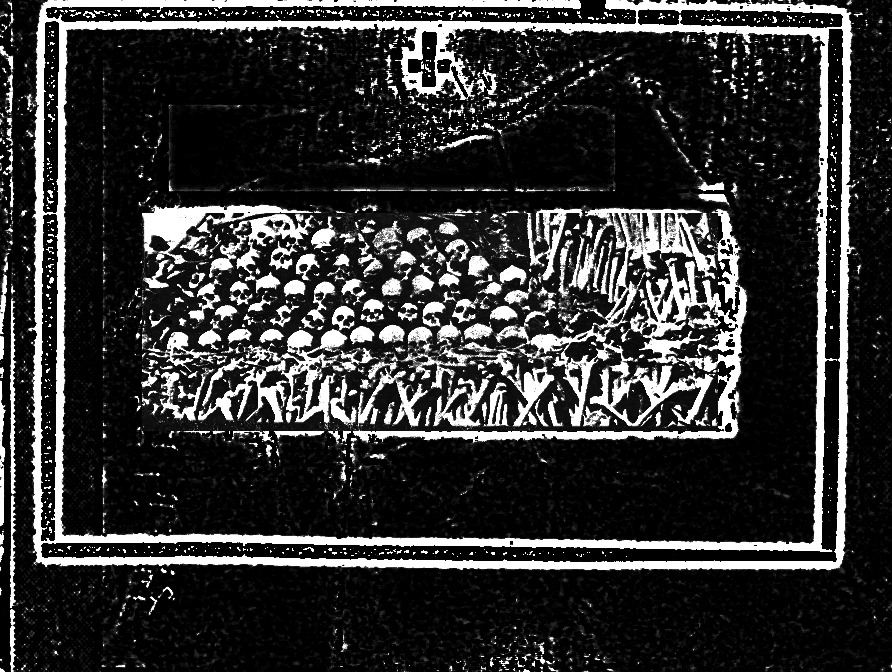
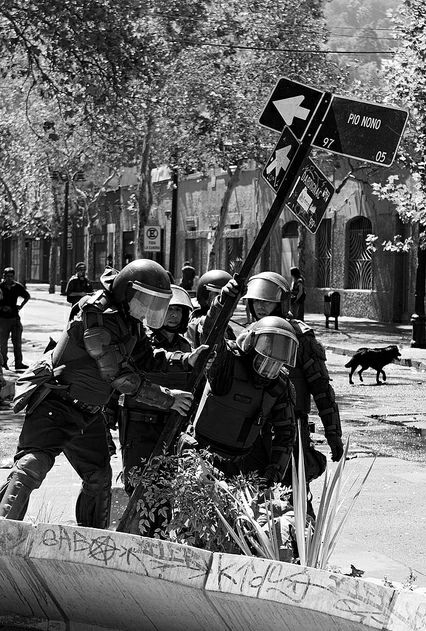



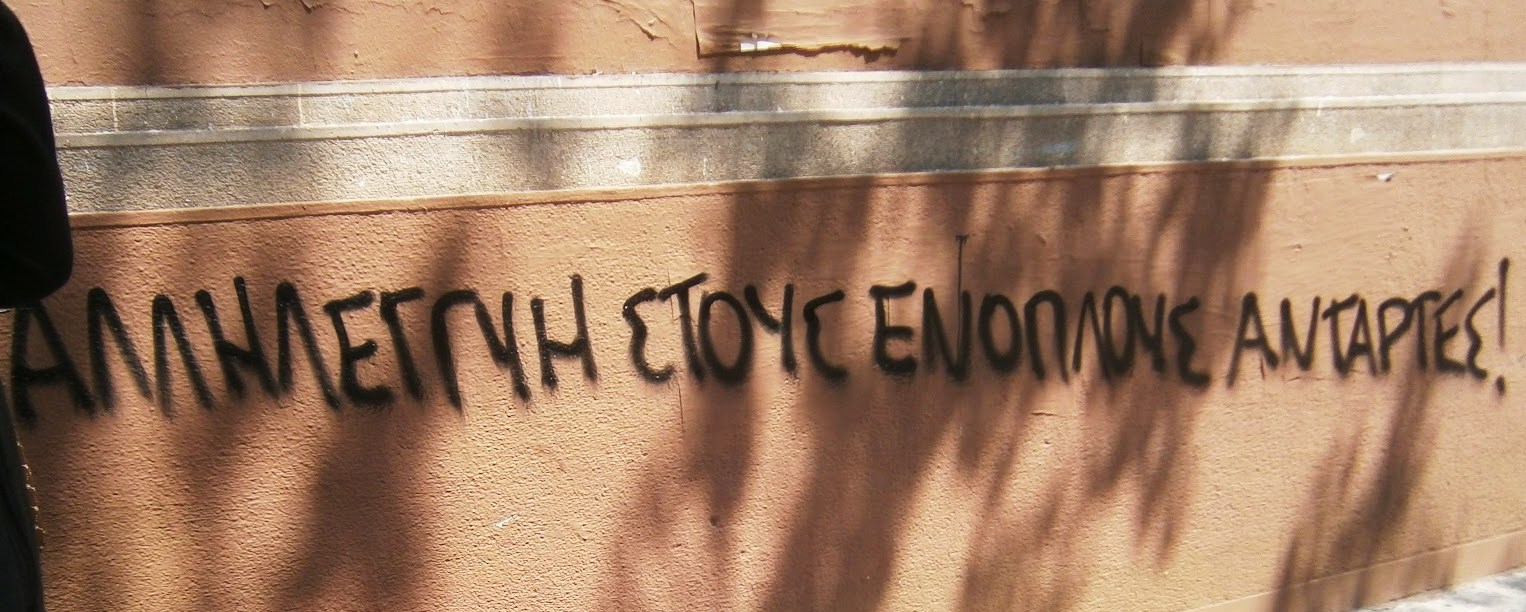

![Eurorepressione - Sulla conferenza a Den Haag sul tema "Anarchia" [corretto]](http://25.media.tumblr.com/tumblr_m0jvngOXtY1qa2163o1_1280.jpg)

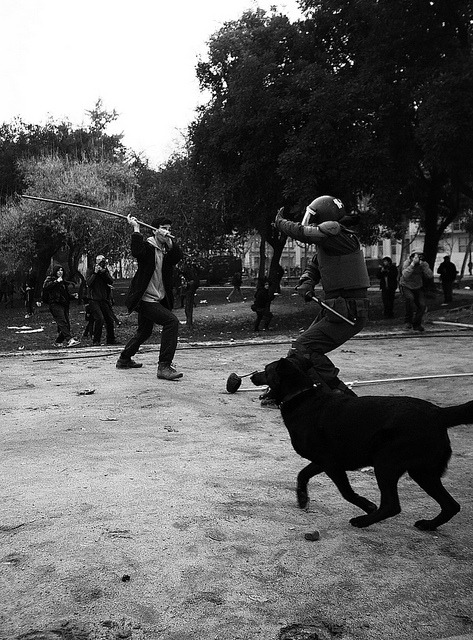
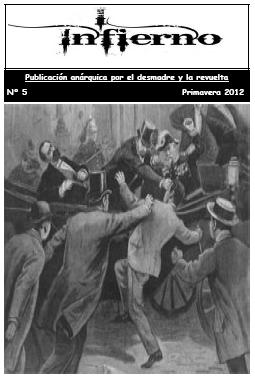
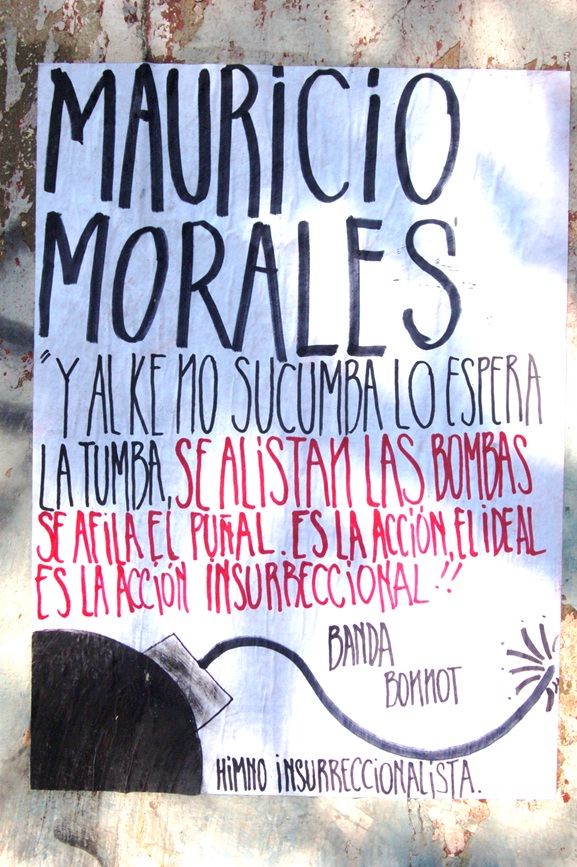
![A tres años de la Partida de Mauricio Morales: De la Memoria a la Calle [Stgo.]](http://metiendoruido.com/wp-content/uploads/2012/05/mmacividad.jpg)










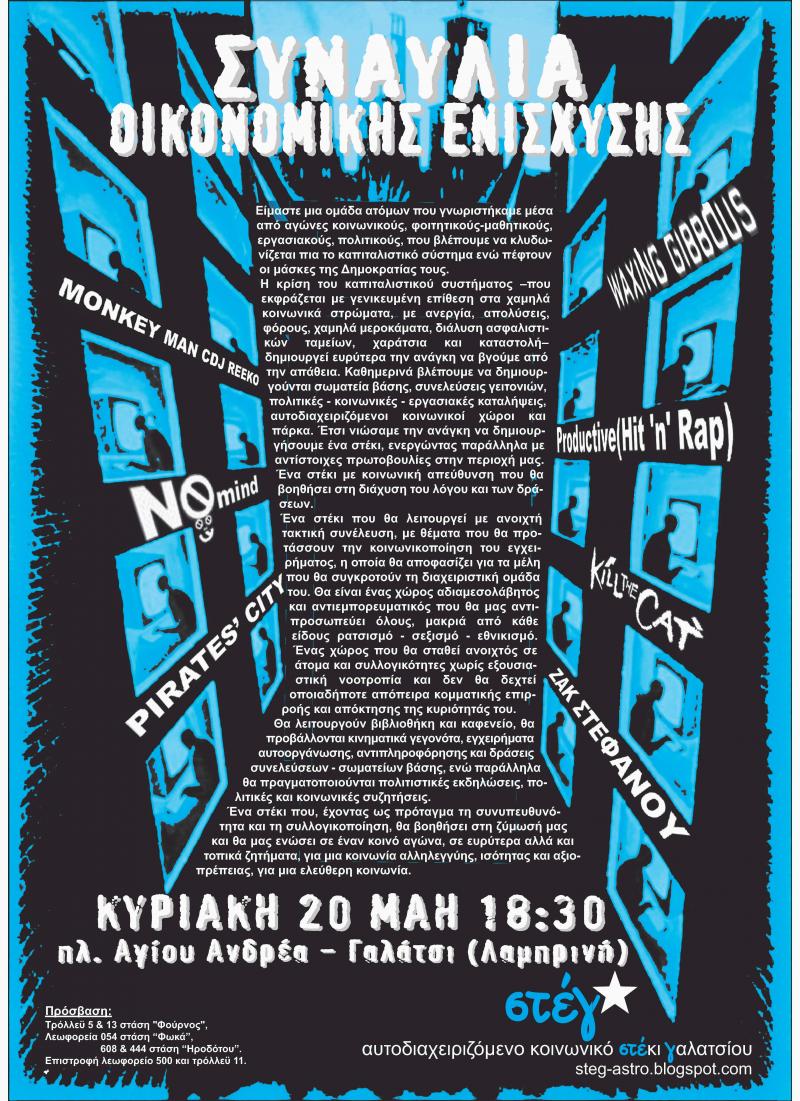








Nessun commento:
Posta un commento